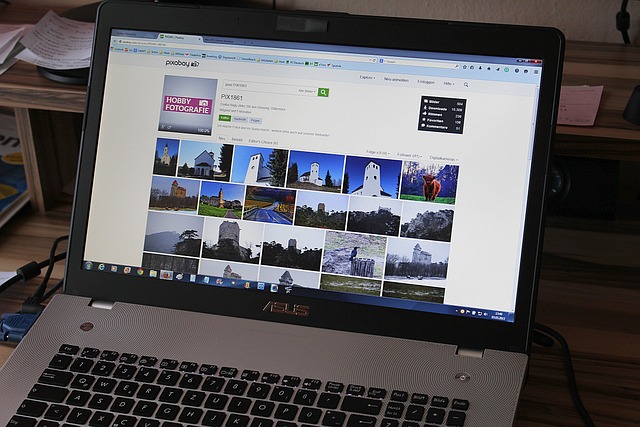Full-stack development is a comprehensive approach in website development where developers are skilled in both front-end (HTML, CSS, JavaScript) and back-end (Python, Ruby, PHP) technologies. This enables them to create and manage every aspect of a website, from design to server-side logic and database systems. Key benefits include informed decision-making, optimized system architecture, and quick troubleshooting.
Back-end development, using languages like Python or JavaScript frameworks, handles server operations and crucial features like user authentication, content management, and e-commerce. Database management is essential for performance, with relational (SQL) or NoSQL databases chosen based on project needs. Security is paramount, requiring multi-layered defenses against vulnerabilities through secure coding practices.
User Experience (UX) design focuses on creating engaging interfaces that meet user needs, impacting key metrics like conversion rates and customer retention. Deployment strategies, including cloud-based hosting and traditional servers, are chosen for performance and accessibility. Future trends include Progressive Web Apps (PWAs), Voice User Interfaces (VUI), IoT, AR, and VR to enhance user experiences in a constantly evolving digital landscape.
“Unleash your creativity with a comprehensive guide to Full-Stack Website Development. This article takes you on a journey through every layer of web creation, from the interactive front-end experiences users engage with to the robust back-end systems that power them. Discover the interplay between programming languages, database management, and security in building dynamic websites. Explore UX design principles for exceptional user engagement and learn about deployment strategies for optimal performance. Prepare to revolutionize your web development journey.”
Understanding Full-Stack Development: A Comprehensive Overview

Full-stack development refers to a comprehensive approach in website development where developers are proficient in both front-end and back-end technologies. It’s like having an all-in-one team capable of building and managing every aspect of a website, from the visually appealing user interface (front-end) to the robust server-side logic and database management (back-end). This end-to-end understanding is crucial for efficient Website Development, ensuring seamless integration and performance.
By mastering both sides, full-stack developers can navigate the entire development process, including design, coding, testing, deployment, and maintenance. This versatility enables them to make informed decisions, optimize system architecture, and quickly troubleshoot issues across different layers of a website’s infrastructure. It’s a game-changer for businesses as it streamlines operations, reduces communication gaps, and fosters faster innovation in Website Development.
The Role of Front-End Technologies in Website Building

In the realm of website development, front-end technologies play a pivotal role in bringing digital visions to life. These tools are responsible for crafting the user interface and ensuring an engaging, intuitive experience for visitors interacting with a site. HTML acts as the foundation, structuring content and defining the basic layout, while CSS adds visual flair by styling elements and creating responsive designs that adapt to various screens. Together, they form the backbone of any modern website.
JavaScript further enhances interactivity and functionality on the front end, enabling dynamic features such as animations, forms validation, and real-time data updates. Its versatility allows developers to create rich user experiences, from simple static pages to complex single-page applications (SPAs). With these technologies at hand, web developers can build stunning, user-friendly websites that not only look good but also deliver an exceptional online experience for users.
Back-End Development: Unlocking the Server-Side Potential

Back-end development is a crucial aspect of website development, focusing on the server-side operations that power dynamic and interactive websites. It involves creating and managing the core functionality, data storage, and business logic that runs behind the scenes, ensuring a seamless user experience. Developers use programming languages like Python, Ruby, or PHP to build robust APIs (Application Programming Interfaces) that facilitate communication between the front-end interface and the database. This process unlocks the potential for efficient data management, secure user authentication, and complex business processes.
By leveraging back-end technologies, developers can implement features such as user registration, content management systems, e-commerce functionality, and real-time updates. These elements are essential for modern websites, enabling them to handle large volumes of user interactions, store and retrieve data securely, and provide personalized experiences. The back-end is the unsung hero, ensuring that every click, form submission, or search query is processed smoothly, ultimately contributing to a high-performing and reliable website.
Choosing the Right Programming Languages for Your Project

When embarking on a full-stack website development project, one of the most critical decisions you’ll make is selecting the right programming languages. This choice significantly impacts your development process and the future maintainability of your site. The key is to match your language selection with the specific requirements of your project.
For backend development, popular options include Python, known for its simplicity and robust frameworks like Django; JavaScript, which offers powerful tools like Node.js for real-time interactions; and PHP, widely used with content management systems (CMS) like WordPress. Frontend languages such as HTML, CSS, and JavaScript are essential for crafting the website’s structure, style, and interactivity. Additionally, considering emerging languages or frameworks tailored to specific needs can enhance your development efficiency and keep your Website Development up-to-date with industry trends.
Database Management and Its Impact on Website Performance

In full-stack website development, database management is a critical component that significantly influences overall website performance. Efficiently managing data allows for faster loading times, smoother interactions, and better scalability. The right database system can handle large volumes of information while ensuring quick retrieval, which is essential for delivering a seamless user experience on modern websites.
Choosing the appropriate database technology, such as relational (SQL) or NoSQL databases, depends on the specific requirements of the website development project. Proper indexing, regular optimization, and efficient querying practices are also vital to maintain optimal performance. By implementing these strategies, developers can ensure that data is managed effectively, contributing to a high-performing and reliable website in terms of speed, stability, and responsiveness to user demands.
Security Considerations in Full-Stack Web Development

In full-stack website development, ensuring robust security is paramount to safeguard user data and maintain the integrity of online platforms. Developers must implement multiple layers of defense to mitigate potential vulnerabilities across both front-end and back-end components. Secure coding practices, such as input validation, encryption for sensitive data, and access control mechanisms, are essential to prevent common web attacks like SQL injection, cross-site scripting (XSS), and unauthorized access.
Regular security audits and patches, coupled with secure communication protocols (HTTPS), help fortify the defense. Staying abreast of emerging threats and adhering to best practices in website development ensures that applications remain resilient against evolving cyber risks. This proactive approach not only protects user privacy but also instills confidence in the overall reliability and trustworthiness of the website.
User Experience (UX) Design: Creating Engaging Websites

User Experience (UX) Design plays a pivotal role in full-stack website development, ensuring that websites are not just functional but also engaging and user-friendly. It involves understanding the target audience’s needs, behaviors, and pain points to create intuitive and seamless digital experiences. By applying UX principles, developers can design interfaces that guide users through the site effortlessly, enhancing their overall satisfaction.
Effective UX design translates into higher website conversion rates, improved customer retention, and better search engine rankings. It encourages users to explore and interact with the site’s content and features, fostering a positive relationship between the user and the brand. In today’s competitive digital landscape, prioritizing excellent UX is essential for any successful website development project, ensuring that online platforms stand out for all the right reasons.
Deployment and Hosting Options for Optimal Website Performance

In the realm of Website Development, deploying and hosting your creation is a critical step that significantly influences its performance and accessibility. There are numerous options available, each offering unique advantages tailored to specific needs. Cloud-based hosting, for instance, provides scalability and reliability by leveraging remote servers, ensuring your website can handle varying traffic loads efficiently. This approach also simplifies maintenance, as updates and backups become more automated and manageable.
On the other hand, traditional hosting services remain a popular choice due to their cost-effectiveness and control. You have the flexibility to choose from shared, virtual private server (VPS), dedicated servers, or even colocation options. While initial setup might be more involved, these traditional methods offer direct control over server configuration, allowing for fine-tuning to meet the precise requirements of your website development project. The right deployment and hosting strategy ultimately contributes to a seamless user experience and optimal performance.
Future Trends Shaping Full-Stack Website Development

The future of website development is brimming with exciting trends that are transforming how we create and interact with online spaces. Full-stack developers are increasingly focusing on building dynamic, interactive, and user-centric websites. One prominent trend is the adoption of progressive web apps (PWAs), which offer a native app-like experience while remaining accessible via the web. PWAs enhance user engagement through features like push notifications, offline functionality, and fast loading times, bridging the gap between web and mobile applications.
Additionally, Voice User Interface (VUI) is gaining traction as voice assistants become more sophisticated. Developers are incorporating natural language processing (NLP) to enable seamless voice interactions, making websites more accessible and convenient for users. As technology advances, full-stack developers will also need to embrace emerging technologies like the Internet of Things (IoT), augmented reality (AR), and virtual reality (VR) to create immersive and connected experiences that cater to diverse user needs and preferences in the ever-evolving digital landscape.
